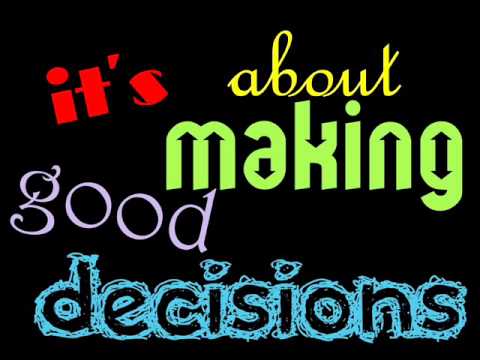We make thousands of decisions each day, and we are always looking for an edge, a specific way to improve our decision-making abilities so we can have more life satisfaction.
One way to improve our information strategy for better decision-making is to get creative about the problem. Here’s how:
A. Challenge the limitations. Matthew Confer, VP of Strategy at Abilitie offers a tip before deciding to challenge the constraints. He argues that too many teams jump into solving a problem without first considering it. He recommends starting by thinking about what barriers are holding you back and then see what is possible. At Sandford, students in an entrepreneur class were given $5 and a challenge to turn it into the most money possible and then present their ideas in the following class. The winning team did not even use 1 cent; they sold the rights to their presentation to a company in town who were happy to pitch to Stanford students to recruit them post-graduation. They challenged the constraints of that 5 bucks and maximized the real opportunity, the presentation. Next time you are deciding, how can you question the limitations before you even begin?
B. Reframe the decision. Sometimes a tweak in the wording of the question can jolt a new way of thinking. Going from, “What can I do to cause the outcome I want,” to “What are the best and worst outcomes I can expect” can lead you down a more creative path. You can also think “AND” not “OR.” If you are contemplating a career shift, you might keep your current job AND volunteer a few hours somewhere else to gather more data before pivoting too hastily.
C. Consider the opposite. This approach helps you think about the problem differently. For example, if you are struggling to decide who to hire and are leaning toward one candidate, consider why that person is not the most appealing option. If you are thinking about Iceland as your next place to visit, make a quick list of why this will be a bad idea and this step will lead you to more research in addressing those concerns, and ultimately more confidence in your decision.
Another way to employ creativity for better decision-making is to find the sweet spot between widening and contracting your options.
A challenge with decision-making is that sometimes we can think in binary terms, especially when we are overwhelmed with emotion, our thinking becomes more rigid. I get married or a breakup; I move to NYC or I stay in the suburbs. When we expand our options to a manageable amount, it changes the problem and can enable us to decide more confidently. To reach this end, we can think about the following:
A. Create a Top 10 list of your best options. Once generated, you can compare and contrast to spot patterns. You can then narrow your choices to 2-3 by cobbling together the best features from the alternatives.
B. Crowdsource. If you are trying to expand your choices, tap into the power of the collective. In 2008, Starbucks created “mystarbucksidea.com,” a submission website where anybody could send their ideas. About 10,000 ideas were submitted and 100 implemented, including a free beverage for every pound of coffee, unlimited brewed coffee, and free coffee on birthdays. Sometimes when we are so close to the problem, we can be blinded by love and emotion, but when we invite outside views, we get ideas we could have never imagined.
C. Scrap your options. You can throw out the current set of selections and create a new list. Maybe you have an employee who is excellent with administration work but not socially friendly; binary thinking would be – fire her or deal with the mountain of paperwork, or keep her and deal with her social challenges. You can throw those options out and come up with new ones. What if we moved her away from interacting with others and just had her doing administration work and allowed the rest of the team to contribute one day at the front desk so they can be closer to the work by interacting with the customers? What if you partnered her with somebody skilled with social interactions so she can learn from excellent examples. What other options are there to consider?
D. Contract options. As the Paradox of Choice goes, the more alternatives we are given, the less satisfied we become with what we choose because we are aware of all the other opportunities we are forfeiting. Once we have gone wide, we want to narrow down our options to a manageable amount – usually 3-5.
To help with decision-making, you want to get creative about your strategy. This may include challenging the constraints, reframing your options, or finding the sweet spot between widening and contracting your decisions.
Quote of the day: “We are the creative force of our life, and through our own decisions rather than our conditions, if we carefully learn to do certain things, we can accomplish those goals” —Stephen Covey.
Q: How do you apply creativity in your decision-making? Comment and share below, we would love to hear from you!
The next blog in this series 5/8 will focus on the role of the mind and the heart in decision-making.]
As a leadership development and executive coach, I work with leaders to help them make hard decisions, contact me to explore this topic further.


